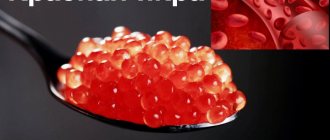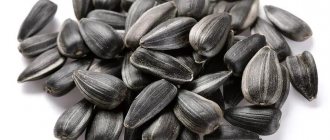Cheese is a hearty food with rich nutritional value, some varieties of which contain more nutrients than some types of meat. However, most of them contain lipids of animal origin, which is dangerous for patients with hypercholesterolemia and increases the risk of developing atherosclerosis.
Cholesterol is indeed present in cheese, and in fairly high concentrations. There is no need to exclude the product from the diet; the main thing is to adhere to the principle of moderation, and also choose varieties with a minimum level of cholesterol compounds.
The nutritional value
Many people love cheese for its delicate taste and piquant smell; not a single feast is complete without it; it is an important component of many dishes. The rich composition makes the product especially valuable for children, the elderly, patients with tuberculosis, weakened after serious illnesses, pregnant and lactating women.
The physical and chemical composition of cheese varies depending on the characteristics of the raw materials, production technology, and recipe. All varieties contain to a greater or lesser extent:
- essential amino acids - lysine, isoleucine, methionine, tryptophan, valine, phenylalline, leucine;
- unsaturated fatty acids, namely linoleic acid, which is especially important for the body;
- vitamins PP, E, D, C, A, B2, B12;
- minerals - calcium, phosphorus, potassium, magnesium, sodium, copper and iron.
The composition of the cheese is as close as possible to the composition of milk, only with a significantly higher concentration of biologically active components.
Composition of cheese, its benefits and harm to the human body
Cheese varieties differ in composition and content of both beneficial and harmful components. But they are all united by a high level of fat content (up to 60% of the total weight), a large amount of protein (up to 30%), minimal content, and sometimes the complete absence of carbohydrates.
Cheeses are rich in:
- vitamins A, C, C, E;
- potassium;
- phosphorus and calcium;
- manganese and sodium;
- zinc, copper and iron;
- amino acids - lysine, methionine, tryptophan, valine, phenylalanine and leucine.
Thus, the benefit of cheese lies in its medicinal and dietary value, which is determined by the content of proteins, vitamins, amino acids and minerals. All this is necessary for the body because:
Allows you to generate energy to support life processes.- Improves the condition of bone tissue.
- Supports vision.
- Increases the growth activity of hair and nails, while strengthening their structure.
- Normalizes digestion processes.
- Promotes healthy hormone synthesis.
- Strengthens the nervous system and immunity.
Unfortunately, in some cases, consuming cheese is harmful . This happens when:
- people suffering from vascular problems and excess cholesterol prefer fatty products without limiting themselves in quantity;
- Cheese lovers with gastritis and stomach ulcers continue to consume it frequently.
To enjoy a treat without worrying about the consequences, it is important to listen to the opinion of your doctor and follow his recommendations.
Beneficial features
To produce high-quality cheese, milk (cow, goat, sheep), a starter of lactic acid bacteria or natural rennet is used - a substance that helps curdle milk and subsequently transform its consistency. Based on the method of precipitation of casein, cheese is classified as rennet or fermented milk.
The value of cheese is determined by its rich composition:
- calcium, together with phosphorus, strengthens bone tissue and regulates mineral metabolism in the body;
- potassium is responsible for heart health and normalizes metabolic processes;
- magnesium increases immune defense, minimizes the risk of developing diabetes, stroke, myocardial infarction;
- sodium regulates neuromuscular activity, promotes the movement of sugar;
- linoleic acid stimulates weight loss, reduces the content of harmful cholesterol fractions;
- vitamins B2 and B12 normalize the function of the nervous system, optimize blood formation, promote hemoglobin synthesis, improve the absorption of amino acids, thereby reducing the saturation of the blood with low-density lipoproteins;
- amino acids activate the breakdown and excretion of lipids, prevent fatty liver hepatosis, and slow down the development of atherosclerosis.
Thanks to proteins and fats, hard cheese is one of the ten highest calorie foods. Less nutritious are soft pickled varieties; they are a more preferable component of a low-calorie diet menu.
Definition of the term
Cholesterol (another name is cholesterol) is a fatty (lipophilic) alcohol formed during natural metabolic processes. 80% of the substance is synthesized by the following internal organs: liver, small and large intestines, kidneys and adrenal glands, gonads. Only 20% is replenished with food.
Cholesterol combines with proteins to form high- and low-density lipoproteins for transport in the blood. High molecular weight (HDL) and low molecular weight (LDL) compounds are formed.
They perform different functions in the body:
- High molecular weight cholesterol is involved in the formation of cell membranes, dissolution with further absorption of the fat-soluble group of vitamins, digestion (bile acids), synthesis of steroid hormones, including cortisol, cortisone, aldosterone, estrogen, progesterone and testosterone, stimulation of serotonin receptors in the brain and other functions.
- Low molecular weight cholesterol is useful only by transporting fats from the liver through tissues, but it has the negative property of being deposited inside the walls of blood vessels, forming into cholesterol plaques that block blood flow.
Therefore, by high cholesterol we mean an increase above normal in the total level of cholesterol, most of which is formed by low molecular weight (4 times more). If measures are not taken in time, a dangerous indicator leads to atherosclerosis of blood vessels, which is subsequently fraught with ischemia, heart attack, stroke and other cardiovascular pathologies caused by circulatory disorders.
How much cholesterol is in cheese?
The table below contains information about how much cholesterol is in the most popular varieties of cheese - data from the USDA Food Database, as well as studies conducted by scientists in our country.
| Variety | Type | Fat content, % | Cholesterol, mg/100 g |
| Cheddar (Chester) | hard, semi-solid | 48-52 | 95-105 |
| Swiss | semi-solid | 30-60 | 40-95 |
| Gouda | solid | 50 | 114 |
| Parmesan | solid | 35-32 | 68-88 |
| Edam (Edamer) | solid | 30-45 | 35-89 |
| Tilsiter | semi-solid | 30-45 | 37-60 |
| Poshekhonsky | solid | 45 | 80 |
| Emmental | semi-solid | 45 | 94 |
| Russian | solid | 45 | 88 |
| Provolone | semi-solid | 20-30 | 60-69 |
| Processed “Sausage” (smoked) | solid | 45 | 57 |
| Fused "Russian" | soft | 45 | 66 |
| Suluguni | pickle | 25-45 | 55-65 |
| Feta | pickle | 30-60 | <89 |
| Adyghe | soft pickle | 14-40 | 54-79 |
| Brynza | pickle | 30-50 | 50-70 |
| Roquefort | soft, with blue mold | 30-35 | 62-90 |
| Mozzarella | soft | 20-45 | 54-79 |
| Camembert | soft | 30-60 | 38-75 |
| Ricotta | soft | 8-24 | 23-51 |
| Limburgish | soft | 20 | 20 |
| Home | soft | 1-4 | 1-11 |
| Goat | soft | 30 | 79 |
The variability of the above data is explained by production technology, regional characteristics of the recipe, and the type of raw materials. These characteristics can change cholesterol concentrations up or down.
Young cheeses made with low-fat milk, which have a ripening period of about a month, contain low levels of cholesterol. The more mature the cheese, the more substance it contains. Varieties that differ in aging from one month to several years are ahead of meat products in terms of cholesterol content.
Acceptable weekly product norm
If the daily norm of cholesterol for a healthy person is from 300 to 500 mg, then for those suffering from vascular pathologies it is half as much, that is, from 150 to 250 mg. Doctors and nutritionists advise completely avoiding “heavy” varieties, and consuming varieties with medium and low fat content moderately, in several doses, dividing into small portions. As an option, soft cheese with a low fat content, 120 g, no more than twice a week.
The total cholesterol content of cheese and other foods eaten per day should not exceed the recommended limits. More detailed information about this can be obtained from your attending physician, who will give explanations taking into account the characteristics of the course of the pathology and general health.
How much cheese consumption will change your blood cholesterol level depends on the type and quantity of the product.
It is important for people with cardiovascular pathologies to remember that even when choosing healthy varieties, they should not abuse the product.
Allowed and prohibited types of cheese
Patients with hypercholesterolemia are not recommended to choose long-ripening fatty cheeses. Despite the undoubted benefits for the body, they help increase the level of harmful cholesterol fractions.
Cheeses with minimal cholesterol content
Today the world knows more than 1000 types of cheese. Depending on the duration of ripening and storage characteristics, four varieties are distinguished: curd (soft), brine, semi-hard, hard. The first two groups are distinguished by relatively low fat content, due to which they are allowed for use in cases of hypercholesterolemia. The following varieties are considered optimal in terms of the ratio of valuable nutrients and cholesterol:
- Adygei is a white friable cheese. Made from cow's milk. Differs in short-term maturation. It is characterized by a delicate unsalted taste, a slightly sour taste, which harmoniously combines with the smell of pasteurized milk. It has pronounced dietary properties, rich in essential amino acids and polyunsaturated fatty acids. It contains cholesterol, but relatively little - from 54 to 79 mg/100 g, depending on the percentage of fat content. Thanks to the balanced composition of antioxidants and amino acids, it promotes the elimination of low-density lipoproteins, thereby stabilizing the atherogenicity coefficient.
- Mozzarella is a soft pickled cheese with a delicate, slightly fresh taste. Made from cow's milk in the form of white balls. Belongs to the category of young cheeses, ripening for 3-4 days. Original Mozzarella can be stored for no more than 10 days. Due to its low calorie content, it belongs to the category of dietary products. Contains a complex of amino acids, antioxidants, vitamins.
- Fresh ricotta (Ricotta Fresca) is a white curd cheese with a delicate, slightly sweet taste. It is a secondary product, as it is made from cow's or sheep's milk whey remaining after fermentation of other types of cheese. Due to this, it has a fairly low fat content - 8-24%. It is a good alternative to butter.
Brynza is a white pickled cheese with a pronounced salty taste. The original recipe involves mixing milk from cows, sheep and buffalos. The optimal ripening period ranges from 40 to 45 days. A dried crust indicates that the product is not fresh. The same is evidenced by an overly rich salty taste. Cheese cheese is useful for hypocalcemia; it quickly restores the balance of intestinal microflora during dysbacteriosis.
The presence of cholesterol is not a contraindication to eating cheese. The main thing is to choose soft varieties with a minimum mass fraction of fat. For patients with atherosclerosis, nutritionists recommend consuming no more than 20-30 g of cheese per day.
Cheese without cholesterol
Tofu is a soy curd cheese with a soft, hard or semi-hard consistency with a neutral taste. It contains no cholesterol, which makes the product an ideal component of the diet of patients with hypercholesterolemia. The product is especially popular among vegetarians.
Produced by combining soy milk with a milk-clotting coagulant. The production technology is practically no different from the production of traditional animal varieties. Tofu contains up to 11% plant proteins, making it a good substitute for meat, eggs, and milk.
Prohibited types of cheese
People whose medical history contains a diagnosis of atherosclerosis are recommended to reduce their intake of cholesterol from food.
If you have high cholesterol, you should exclude from your diet:
- Processed, smoked sausage cheeses. In an attempt to reduce fat content, manufacturers heat-treat the cheese. The result is a tasty soft mass with significantly lower cholesterol levels. Under the influence of high temperatures, some lipids actually break down, but most of the beneficial nutrients leave with them. The body will not derive any benefit from such a product.
- Hard cheeses. Domestic hard varieties are leaders in cholesterol concentration. Some sources indicate critically high levels in Dutch, Russian and Kostroma cheese, namely 510, 1130 and 1550 mg per 100 g of product, respectively. Patients with atherosclerosis are strictly prohibited from consuming these varieties.
- Fake cheeses. High levels of trans isomers indicate that artificially hydrogenated fats like margarine were used during production. Such products are not only useless, they are dangerous. Consumption of trans fats increases the concentration of cholesterol and increases the likelihood of developing cardiovascular diseases.
Yes or not?
Based on the data on the saturation of various types of cheese with cholesterol, it becomes obvious that cheese is by no means prohibited for people with high levels of this substance in the blood.
For example, consuming 100–150 grams of cheese 2–3 times a week is enough to supply the body with the required amount of nutrients and biologically active substances that this product is so rich in. And at the same time, eating cheese in such quantities cannot lead to a noticeable increase in blood cholesterol. Is it possible to eat with hypercholesterolemia? You can, but you will have to limit yourself to the specified amounts so as not to increase your already prohibitive cholesterol level.
In addition, it should be noted that specialists in the field of nutrition and healthy eating are increasingly placing emphasis on soft varieties of cheese in their recommendations.
Separately, we should dwell on the features of Adyghe cheese. Its difference lies in the fact that in its production, cow and sheep milk are used in a certain combination. In this case, a special biologically active complex is formed that is capable of removing cholesterol from the body and thereby reducing its concentration. This property is especially important for people with high cholesterol levels.
The main condition, subject to which the eaten product will not cause harm to the body, is a balanced diet.
How to choose
Not all cheeses on store shelves are healthy. Some include the “baggage” of vegetable fats, preservatives, dyes, and pathogenic microorganisms. When choosing a quality product, three points should be considered:
- Compound. Natural milk, salt and milk-clotting component (bacterial or animal) are the only correct components of natural cheese. The presence of vegetable fats automatically defines it as a “cheese product”. Quality cheese does not contain antibiotics, preservatives, dyes – E160 a, E160b, E102, E110, E251.
- Appearance. Stale cheese can be identified by eye. Dried edges, black inclusions, mold, “plastic” crust, uneven color, heterogeneous structure indicate its staleness.
- Package. It is recommended to buy cheeses that were originally packaged by the manufacturer. The product, cut into pieces and wrapped in plastic, is not airtight, so it remains fresh for a short time. In addition, there is no information about the composition. The maximum that a buyer can find out is the name, weight, and price of the block. Lying on the counter for a long time provokes the proliferation of pathogenic microorganisms under the plastic film.
The cheese product is positioned as a budget replacement for natural cheese. Instead of milk fat, the recipe involves the use of vegetable oil, most often palm oil. Naturally, its nutritional value cannot be compared with the original. But at the same time, a high-quality cheese product contains significantly less cholesterol, so it is recommended for consumption by patients with cardiovascular diseases.
Contraindications
It is recommended to limit cheese for people with urolithiasis, pyelonephritis, gastritis, high stomach acidity, and colitis.
Excessive consumption of cheese is dangerous:
- Significant increase in cholesterol levels. Those suffering from hypercholesterolemia are advised to choose a product with a fat content of no more than 20%.
- Increased blood pressure. Due to its high sodium content, cheese has a hypertensive effect, which is extremely undesirable for people prone to regular or occasional increases in blood pressure.
- Sleep disorders, headaches. According to research, the substance tyramine - a component of animal proteins - can cause headaches and insomnia.
Blue cheese is not recommended for pregnant women and people suffering from functional disorders of the gastrointestinal tract. Molds can disrupt the functioning of the digestive system and also provoke a bacterial disease - listeriosis.
Lipid concentrations in cheese products
Cheese can increase cholesterol levels because it contains milk. The amount of lipids in the product in question may vary. This depends on the fat content of the milk used in preparation.
Therefore, people with high cholesterol need to limit their cheese consumption and choose only those varieties that have a minimum concentration of harmful fats.
To get rid of excess fat content, manufacturers began to melt cheeses. During this procedure, the vast majority of cholesterol disappears. However, many useful substances and vitamins are also lost. But the taste is preserved and there is no threat to human health.










